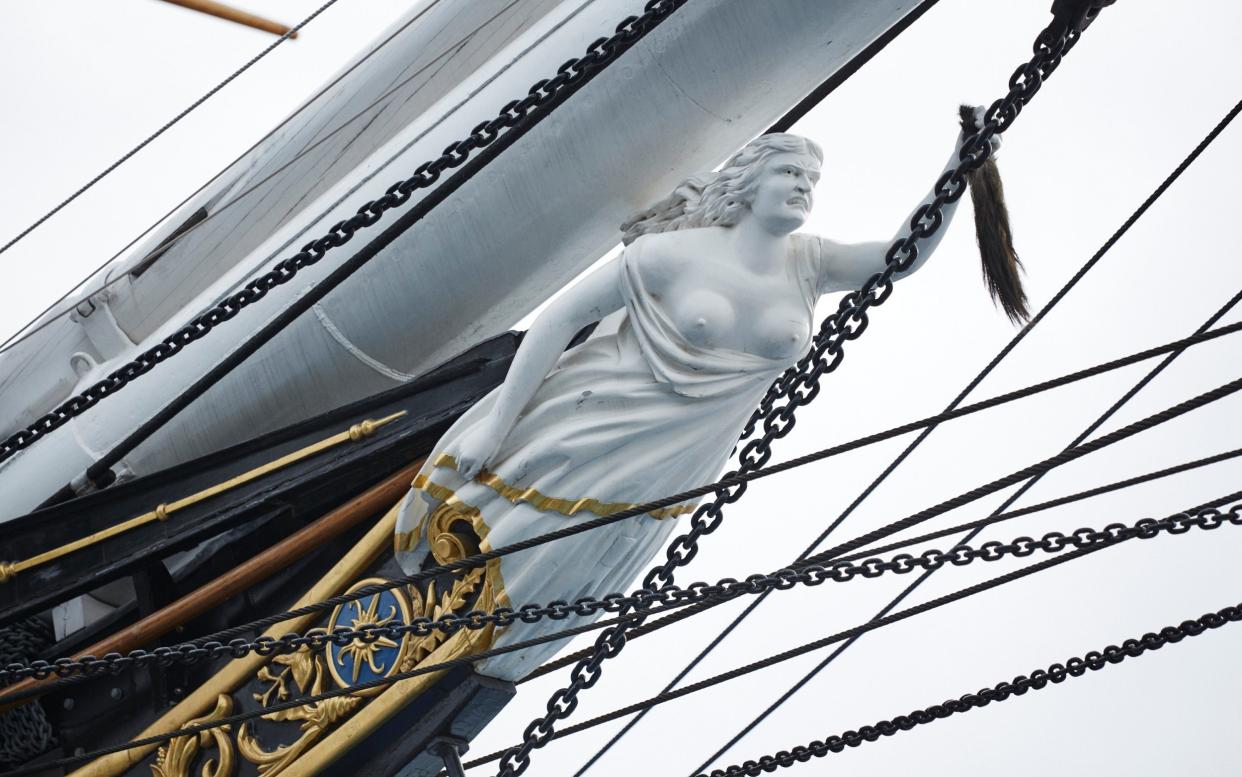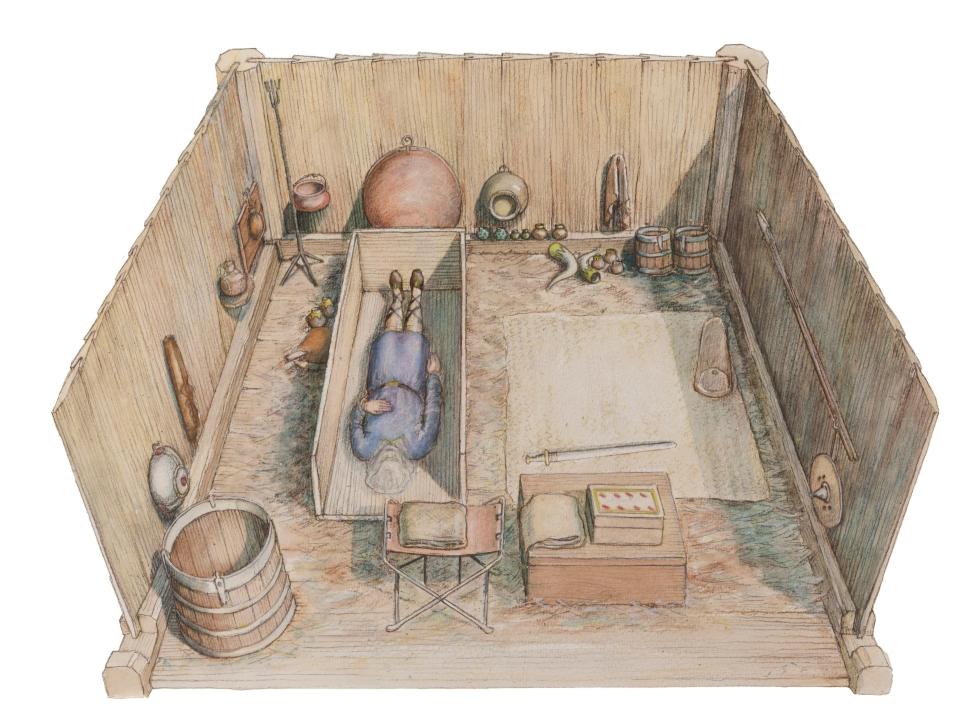‘It’s like we’re putting the Anglo-Saxon prince to bed’: behind the scenes at museums in lockdown

“If people heard me, they’d think I was mad, saying hello to a boat. [But] it’s alive, and not just when it’s open to the public.”
The voice belongs to Alex, caretaker of the Cutty Sark museum in Greenwich, and he isn't the only one talking to the objects under his charge. Here’s Ciara, for instance, who watches over the Anglo-Saxon Prittlewell princely burial at Southend Museum: “We definitely speak to [the objects] in the way that might kind of personalise them,’ she says, “because we do think about the Prince as though he is a person – and he is a person, he was a person. Closing the space down, turning off the lights, make sure that everything is safe and sound and say ‘night Prince!’, ‘night Princey!’ It’s almost like we are putting the Prince to bed.”
Theirs are two of the six recordings that comprise Eloise Moody’s new audio artwork, The Caretakers, which has been released piecemeal over social media this week. Created during the recent lockdown, when museums and galleries throughout Britain were closed to all but their security and caretaking staff, it acquaints us with the thoughts, hopes and reveries of the men and women tasked with watching over our national collections; men and women whose thorough knowledge of – and indeed passion for – their charge, mostly goes unnoticed.
“I had been pondering making something that re-imagined the traditional curator-led tour for a while,” Moody tells me, “because often the people in the less glamorous jobs in the arts sector have a different perspective on our national treasures than the date-led, academic interpretation we are used to; a perspective that is just as vital and engaging. When museums became inaccessible in March, it became more urgent. I kept thinking about what the experience of spending so much time alone in these empty spaces was doing to them.”
Participants from the Museum of London, Kettle’s Yard, Cambridge, the Pitt Rivers Museum, Oxford, Birmingham Museum & Art Gallery, and the Cutty Sark were given instruction by Moody in audio technique – logging sound effects such as keys, walking, doors shutting and so on – but otherwise, they were left to record how and when they wished during a shift.
Day 3 of @caretakertales comes from @kettlesyard. Find out more about this project and listen to the full recordings at https://t.co/v6eRSgKjDd https://t.co/vxkHeqlfd5
— Pitt Rivers Museum (@Pitt_Rivers) July 15, 2020
At first blush, each episode had been designed to focus on one object, and though the speakers do describe their chosen piece, it’s as if the floodgates open, and whole unspoken histories insinuate their way into the air. The content expands and diverges – a wry aside here, a confession there, little darts and rushes of soliloquy.
“I think because it required them to talk to themselves for an indeterminate amount of time,” Moody says, “and because they were alone in the quiet, the recordings naturally became very reflective and intimate. It often happened that while they were talking, they’d notice things they’d never noticed before.”
At Kettle’s Yard, for instance, the former home of the patron and collector Jim Ede, caretaker Steve had never sat in the chairs, “which I found extraordinary,” says Moody, “but something about making his recording had prompted him to try them all out.”
I listen to Steve: “From this angle, this particular painting has a very different look from that angle,” he says, “and offset with a very dark painting underneath, again, on the floor, which, you know is strange, but when you sit in the chair and you start to look at it, you think, this is right. It looks good.”
Later on, he arrives at one of the Edes’ old pianos, “there is absolutely no reason why I should be playing it,” he says, “but here it goes”. And then: “I think it’s the place that we’re working in, that makes us who we are. It’s certainly shaping me.”

Ciara, meanwhile, is “terrified” by the lure the Prittlewell burial’s antler dice extend over her in the dark. “You could play with them now,” she says, “you could physically pick one up. Obviously we would never do that! The thought of it even makes me nervous.”
And here’s Marta, at the Museum of London: “My favourite object is a coach...made of wood, metal, leather, fabric and painted gold. I always stop for a few seconds in front of it. I can’t take my eyes off it. I love it when I shine a torch and I can see it standing there: beautiful, huge. I’m tempted to touch it but it feels like; it feels like touching it would cross the line.”
Slowly, details of their lives emerge. Marta, we learn, has been at the museum 12 years and is the only woman in her department. She is also a single parent “of a six-year-old very cheeky girl. I never realised how annoying I could be,” she adds, “until I created a miniature version of myself and I’ve started arguing with it daily.”
Alex, meanwhile, breaks off from describing the minutiae of his shift (“I take my flask with me, I take something to eat, I take a book...I still get that buzz, even now, even when it’s freezing cold and I come in at twenty to six in the morning”) to recall the stammer that blighted his teenage years, and how he had to leave school at 16.
The second @caretakertales episode is out!
Alex works in security at @RMGreenwich looking after the Cutty Sark, the world's only surviving tea clipper. Want to know what's it like to work in a museum that is also a boat? Head to https://t.co/RzgcezNYrI to listen to the full audio pic.twitter.com/v7Y0s0uboA— Southend Museums (@SouthendMuseums) July 14, 2020
Then: “‘Cutty Sark to control’ – that’s just to let them know in control I’m still alive,” he explains, as if in conversation with us, before commenting that the boat, which sits in a dry dock made from glass, reminds him of a cathedral, and that, in the summertime, “as the boat and its surroundings cool down, it creaks. When the wind blows and during a storm you can hear the mast shaking. Don’t be alarmed! This is nothing to worry about.” Honestly, it’s mesmerising to listen to.
Since Moody began the work, which was made in conjunction with the artists' support organisation Metal, other museums have come forward to take part. “Lockdown wasn’t the right time for some of them,” says Moody, “but there’s more to explore here.”
Best are the points in the recordings where the caretakers are momentarily excited or overwhelmed. Here’s Ciara, for instance, describing the burial chamber. “It’s really dark. It’s really low lit. The walls are black. The floor is black. There’s a really beautiful, glistening, ethereal light. The collection sings almost, in the space. And you can feel it.”

Confronted with an empty room in which concerts are usually held at Kettle’s Yard, Steve describes how “the sounds just permeate through the walls”, and that, if he stands still, he can summon forth the music in his head to listen to.
“I know I’m on my own,” he adds, “but I don’t feel lonely and I don’t feel scared. I just feel very warm. You just feel like you’re...Well, you certainly feel special for being in such a place.”
To listen to The Caretakers, visit each museum's individual Twitter page, or eloisemoody.com
